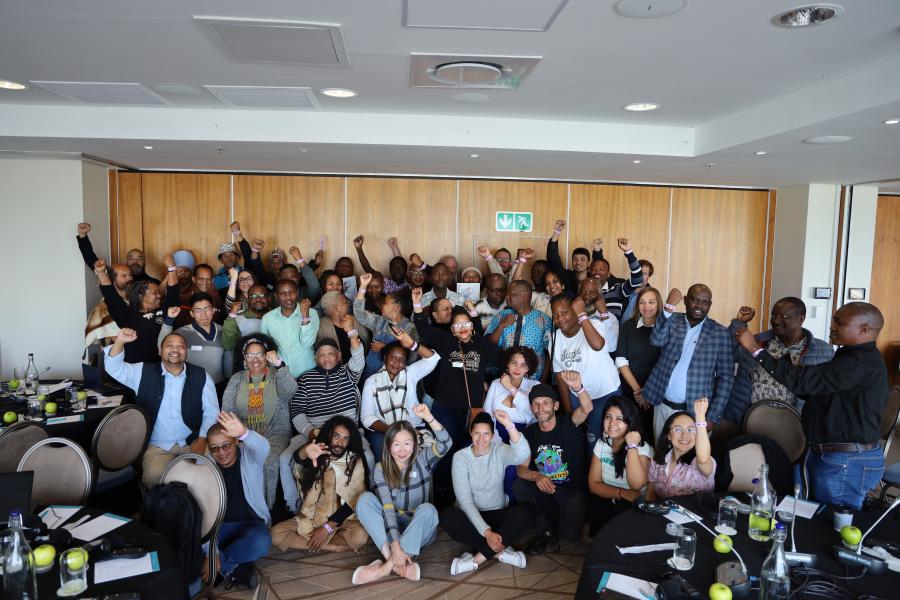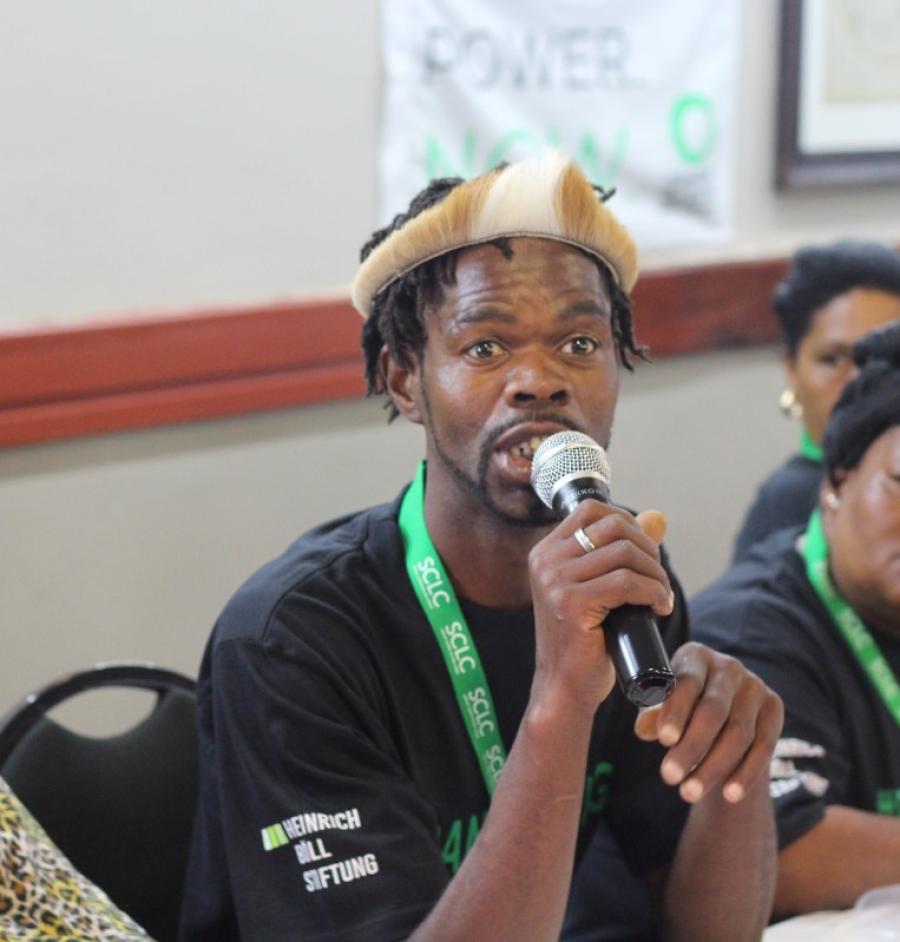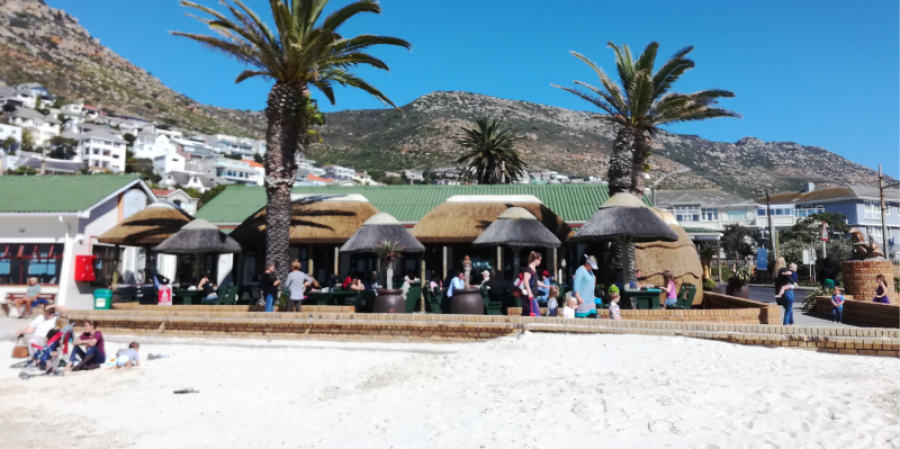In southern Africa, as in other parts of the world, indigenous peoples are integral components of parks and protected areas. Indigenous Africans are mostly from hunting and gathering societies or from nomadic herding peoples. Although there is controversy about the term “indigenous African,” in southern Africa it is widely accepted that hunter-gatherers such as the San and Khoe are the First Peoples of the region.
Many protected areas in southern Africa were established during the latter part of the 19th century to protect wildlife from excessive hunting. For about 50 years, large areas were set aside for parks and game reserves. In many instances local people were forcibly removed and relocated to unfamiliar places, depriving them of their land rights, access to ancestral lands, and livelihoods. Indigenous peoples were dispersed to increasingly marginal areas, first by the more powerful Bantu-speaking African migrants from West Africa, and then later by the European colonizers whose brutal policies included genocide. In these areas, the San were hunted as vermin. Inevitably such an unjust and violent legacy continues to influence and inform relationships between indigenous peoples and the management of these protected areas in southern Africa, despite the process of democratization in the region, the dismantling of apartheid and discriminatory laws in South Africa, and new national policies that support land claims, restitution of property, or suitable compensation.
Since the election of a majority government in South Africa in 1994, the country has taken the lead in Africa in recognizing indigenous peoples and their rights to ancestral land, including those who live inside protected areas. In a 1999 landmark case the government recognized the rights of the indigenous ‡Khomani San to land in the Kalahari Gemsbok National Park (now the Kgalagadi Transfrontier Park). This recognition has opened the way for other successful land claims.
Despite these achievements, many parks and protected areas still reflect the political context within which they were created, resulting in inconsistencies in the treatment of indigenous landowners within and neighboring parks.
As the process of establishing or extending protected areas in southern Africa continues, many lessons have been learned, but the process will continue to be fraught with problems unless there is sincere commitment to acknowledge the rights of neighboring communities and to allow their full and effective participation.
South African National Parks
In South Africa the administration of protected areas, which cover more than 68,000 square kilometers, is shared between the South African National Parks (SANP), provincial and district directorates and departments of nature conservation and the environment, private companies, and municipalities. The SANP manages the largest portion of these protected areas. The ethos and policies of this parastatal, therefore, are enormously influential. SANP has the potential to play a critical role within the sector of biodiversity conservation and indigenous peoples’ rights not only in South Africa but throughout the region, particularly through Transfrontier Parks. These parks consolidate protected areas across boundaries with neighboring countries.
The SANP head office has committed to transform itself, but this pledge has yet to be replicated throughout the entire organization. Within the parks themselves, the upper employment categories are still dominated by white males, some of whom still hold racist attitudes and do not see the value of building good relationships with park neighbors. It is unrealistic to expect that parks established a century ago would easily shake off the discriminatory legacy of the past, but more importantly, the policy framework in the biodiversity protection sector is inadequate with regard to issues of indigenous peoples. Attitudes toward indigenous landowners depend largely on the mind-set of local park managers.
With support from the Indigenous Peoples of Africa Coordinating Committee (IPACC) and the South African San Institute, indigenous representatives from the four protected areas met as a task team in July 2003 and established the Indigenous Peoples and Parks Working Group (IPPWG) to address the difficulties facing indigenous peoples who live in protected areas or on the borders. A major concern is the lack of consistency within SANP, especially in terms of the treatment and rights of access accorded to indigenous landowners. Currently the working group is composed of San, Nama, and Griqua representatives and its objectives are to:
• Encourage co-operation and unity of intent and action among indigenous communities living within or close to national parks and protected areas
• Develop a common policy position on parks and protected areas among indigenous peoples in South Africa and the region in order to speak with one voice
• Enter into dialogue with SANP and other conservation authorities to ensure fair and equitable treatment of indigenous peoples
• Build the IPPWG into a strong representative coordinating body for indigenous peoples in South Africa and across borders of Transfrontier Parks.
• Create opportunities to share experiences and learn from each other to increase effectiveness and efficiency within indigenous communities and avoid repeating similar mistakes
• Promote indigenous tourism projects inside and outside the parks • Raise awareness and build understanding by documenting the needs and views of indigenous peoples.
The IPPWG plans to increase its influence over time, but currently it represents four protected areas with different histories and neighbors. Three of the areas share borders with neighboring countries. These areas illustrate the links between the conditions under which a protected area was established and park management attitudes.
Kgalagadi Transfrontier Park
The Kgalagadi Transfrontier Park (KTP) was the first cross-border park to be established in southern Africa. It joins the Kalahari Gemsbok National Park with the Gemsbok National Park in Botswana. Bi-national negotiations produced a common management plan, but the future role of the ‡Khomani San was not considered. This omission was serious, given that the Botswana government has forced the removal of the San from its Central Kalahari Game Reserve and continues to disrespect indigenous peoples’ rights and traditions.
The South African side of the Kgalagadi Transfrontier Park, which extends into Botswana, was originally proclaimed as a conservation area in 1931 to protect the migratory gemsbok herds. At that time, the ‡Khomani San were living as hunter-gatherers in the arid Kalahari desert and were viewed as part of the ecosystem. It was only in recent years that the park was fenced and the ‡Khomani San were forcibly removed and settled in villages on the park boundary. This transition was difficult for the San, forcing them to end their hunter-gatherers lifestyles and become herders.
In 1996, the ‡Khomani San initiated a land claim based on these historical injustices. In August 2002, the widely celebrated land claim was finally settled, and the ‡Khomani San community received 25,000 hectares inside the park with 8,000 hectares still owed to them. They also received 40,000 hectares outside the park, 60 kilometers away, an impossible distance to travel without transport. This additional land is far from the Auob River where boreholes are located and where birds, springbok, gemsbok, and other animals can be found. Animals are integrally linked to San culture, and contact with wildlife is vital if elders are to pass on traditions and knowledge to the younger generation.
After the land claim was settled, focus shifted to other dispossessed groups and political agendas, leaving the San once again forgotten and unable to negotiate a joint management plan. Lack of a management plan continues to have serious repercussions because there is no policy or document in place to guide the divergent needs of conservation managers and the ‡Khomani San, who want to establish their land inside the park as a living history where elders can pass on their knowledge, skills, and traditions to youth. As the ‡Khomani San have discovered, management, not title deeds, gives power and control over land.
Though the ‡Khomani San have been granted commercial and symbolic rights in the Kgalagadi Transfrontier Park, discrimination is still a reality among park officials who continue to treat the San with disrespect despite their status as rightful landowners within the park. Park management makes it difficult for the San to visit their own land or family graves inside the park. Repeated requests to install the system used by the Richtersveld National Park, where the indigenous peoples have their own gate and keys to access their land inside the park, have been ignored.
Augrabies Falls National Park
The history of the Augrabies Falls National Park (AFNP) dates back to the 1960s and 1970s when Nama residents were progressively dispossessed of their land, including the disputed Melkbosrand, to make way for a nature reserve. This encroachment eventually led to their forced removal in 1973, when the Riemvasmaak area was declared a conservation area under the control of the South African military to be used for weapons testing. The apartheid government declared the place and the people a “black spot” that needed to be removed. The people were given bus and train tickets to leave the area, then their homes were burned. Some people went to the Ciskei in the Eastern Cape, while others crossed the border into Namibia.
When the military moved out of the area, authority of the park reverted to the SANP. In 1995, after the majority government elections, the Nama people started returning to the area. Initially they lived in tents until they were given subsidies to build houses on 4,000 hectares of land allocated to them on the far side of the Kai !Garib River. They could not use or visit the designated AFNP, although many of them had been born there and their relatives were buried there.
The Nama community now receives some financial contribution from the park, but eight years of negotiating with the SANP for a joint management contract has yet to produce a formal agreement. The community is interested in developing tourism in cooperation with the park, but there has been no support or interest shown on the part of management. The Nama community has approached relevant local, regional, and national authorities to explain their concerns and their objective of having their traditional home of Melkbosrand excised so they can move back into the area. They intend to develop the Augrabies Falls National Park as a community-controlled park similar to the Richtersveld.
AFNP has a common boundary with Namibia, so in the future it could be developed into a transfrontier park if conditions in Namibia become appropriate.
Richtersveld National Park
The Richtersveld National Park was proclaimed on August 19, 1991, after an 18-month interdict, brought by the Nama and other neighbors, forced the government to delay the formation of the park. The Nama and other residents from the four neighboring villages—Kuboes, Sanddrif, Lekkersing, and Eksteenfontein—demanded to be fully informed about the Richtersveld before its proclamation. The final ground-breaking settlement acknowledges ownership of the land by the indigenous people who lease it to SANP. The RNP is also the first park in South Africa that allows people to continue living inside the protected area and graze their livestock within zoned areas of the park. SANP took several years to develop a joint management plan without any community input. This process created a sense of ownership on the part of SANP which made them defensive to any criticism or opposition and left the community with little room to maneuver during the heated negotiations.
It would have taken far less time, generated more goodwill, and produced a better management plan if the two parties had discarded the first SANP document and developed a new one jointly. Both parties lost the flexibility required to establish a plan that ensures indigenous people the opportunity to benefit, grow, and empower themselves through the management of the protected areas while at the same time conserving and developing biodiversity security and protection. The joint management plan was eventually signed on October 26, 2002, between SANP and the Richtersveld communities. The contract gives preference to local community members to fill vacant positions within the park. Currently, the park manager is an indigenous person from the local Nama community.
When SANP initiated the creation a couple of years ago of a transboundary park with Namibia extending into the Richtersveld protected area, lessons of full consultation with local landowners were neglected, despite a stated commitment to a participatory approach in all negotiations with local communities. Again indigenous and local residents and landowners were not adequately consulted nor fully informed about the establishment of the transfrontier park or the proposed name change to the |Ai-|Ais/Richtersveld Transfrontier Park (ARTP). Proper community consultation could not possibly be conducted under the frantic conditions that typified the six months prior to signing the treaty establishing the ARTP. |Ai-|Ais/ refers to a place in Namibia, not South Africa, and the indigenous Nama say that officials from the SANP head office, who have no historical links with the Richtersveld, had no right to unilaterally change the name of their ancestral home.
On August 1, 2003, President Sam Nujoma of Namibia and President Thabo Mbeki of South Africa signed an international treaty establishing the ARTP.
Indigenous Working Group
Even in South Africa, where the government has taken the lead in Africa in recognizing indigenous peoples and some of their rights, there is still no clear indication the national government will endorse the United Nation’s Draft Declaration on the Rights of Indigenous Peoples. Despite the government’s commitment to making reparations for past violations and injustices, there is a need for broad consultation to develop policies and practices that recognize the right of self-determination of indigenous peoples and the contribution of indigenous knowledge to sustainable development and biodiversity protection.
The newly formed IPPWG has committed itself to working productively with SANP and planned to present a joint document at the World Parks Congress (WPC) in Durban, South Africa, in September 2003, including input from park managers representing arid parks in the dry desert areas of the Northern Cape Province. To this end formal invitations were sent to the district manager for SANP in the Northern Cape and to relevant park managers to attend a local meeting on August 27, 2003, to discuss concerns and plan the way forward. Despite follow-up faxes and phone calls the IPPWG never received a reply to their invitation.
Although disappointed by this communication breakdown, the IPPWG produced The Indigenous Voice on Parks and Conservation in South Africa, which they presented at the WPC. The document identifies the issues that need to be addressed in order to build better relationships between indigenous communities and protected area managers. The IPPWG also drew up a 12-point submission to the SANP, which had been tabled at the indigenous peoples’ preparatory meeting prior to the WPC. It focuses on the need for SANP to develop, in conjunction with indigenous representatives and other stakeholders, park policies that formally address indigenous peoples’ issues and accord with internationally accepted principles, guidelines, and recommendations. In order to support this transformation, SANP will need to allocate sufficient funds and dedicated executive staff to ensure uniform implementation at park level.
During the indigenous peoples’ preparatory meeting for the WPC, the IPPWG also identified the need for greater understanding of and respect for indigenous peoples among park officials in order to change discriminatory attitudes and behavior. This adjustment will require educating non-indigenous staff about indigenous peoples, their needs, and their rights. It will also require firm action when parks personnel display discriminatory attitudes and actions against indigenous peoples.
Furthermore, the IPPWG request emphasizes the need for SANP to build capacity in neighboring indigenous communities to ensure that people from these communities are able to be appointed to all levels and aspects of parks and protected area management. Conversely, SANP needs to integrate indigenous knowledge, skills, and environmental practices into management and development strategies of parks and protected areas. In addition, support and recognition needs to be given to income-generating projects that are environmentally sound and socially friendly and fair, and that open opportunities for marginalized indigenous peoples. Finally, the submission calls on international non-governmental organizations and other agents who support conservation to have the responsibility of ensuring that their priorities accord with international policies and practices that promote indigenous rights.
The creation of the IPPWG demonstrates an important shift for indigenous peoples from a position of simply demanding recognition of their rights from protected area managers to a more proactive position of empowerment. Indigenous peoples have learned the hard lesson that landownership alone does not necessarily bring benefits, but that management holds the power to create or block opportunities. This realization has stimulated the IPPWG to consider developing their own policies and management plans in order to actively influence protected area management and development. It is critical for indigenous peoples to be proactive and to participate in the development of policy and management plans from the outset, thereby avoiding the invidious position of having to react to documents already drawn up by the SANP and park authorities.
Although the IPPWG is a South African initiative, indigenous representatives from Botswana and Namibia at the WPC endorsed the objectives and the 12-point submission to SANP. At least two transfrontier parks border on these countries and more are in the pipeline. These tranfrontier parks are seen as an important entry point to lobby SANP for progressive park policy that considers the rights of the indigenous peoples with ancestral lands in transfrontier parks. The satisfactory resolution of issues on the South African side of the Kgalagadi Transfrontier Park could provide a positive role model for Botswana’s future dealings with the San there. Similarly, an important link could be established between the Nama of South Africa and Namibia through the |Ai-|Ais/Richtersveld Transfrontier Park.
Sheila Dutton (Sheila@ecosystem.co.za) is a psychologist and social researcher. She has worked with the Indigenous Peoples of Africa Co-ordinating Committee since 1999. Her focus is on including marginalized hunter-gatherer communities in southern and eastern Africa in the indigenous peoples movement. Fiona Archer (archer@iafrica.com) has worked with indigenous people in southern Africa for the last 30 years. Working as a catalyst at the request of indigenous groups she specialized in supporting community land claims and in developing participatory procedures and systems for co-management and self management of protected areas and other natural resources.



